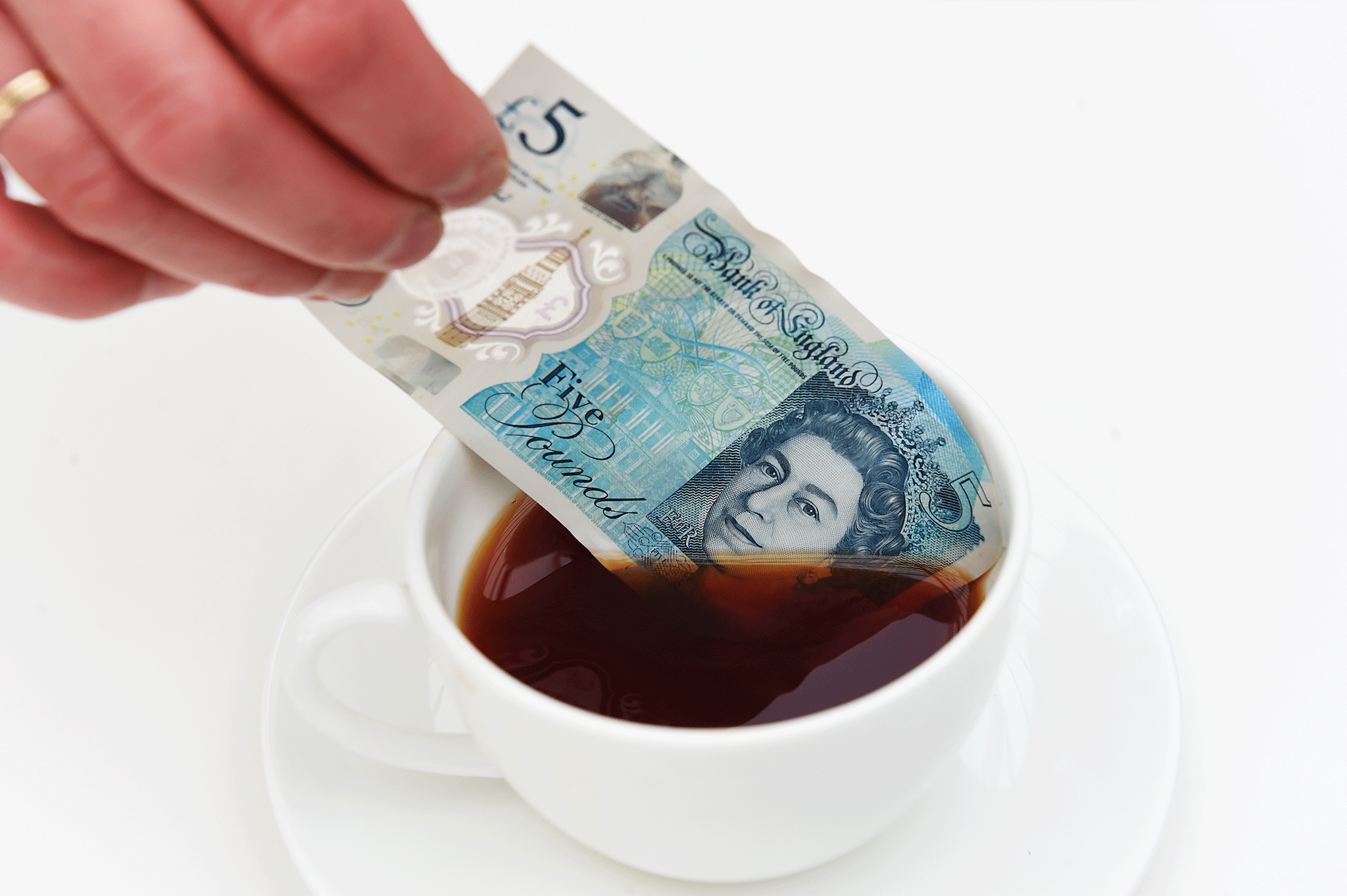New plastic £5 notes featuring Sir Winston Churchill to enter circulation
Q&A: Everything you need to know about the new fiver

A new plastic £5 note featuring Sir Winston Churchill will start to appear in the nation's wallets after going into circulation from next week.
The new banknote will start to enter circulation from Tuesday. In a break from the Bank of England's current paper notes, it will be printed on polymer - a thin flexible plastic film, which is seen as cleaner, more secure and stronger.
The new note can last around five years longer than paper notes.
It may take a few weeks for some people to start seeing the new note as it gradually appears. The old fiver, featuring prison reformer Elizabeth Fry, can still be used in shops until it is withdrawn from circulation in May 2017.
The new £5 note paves the way for a new generation of security features, making the note even harder to counterfeit. They include a see-through window featuring the Queen's portrait as well as Big Ben shown in gold foil on the front of the note and silver on the back.
The announcement by the Bank in 2013 that Fry would be replaced with the former prime minister caused an outcry as it could have meant that, apart from the Queen, there would be no female faces on the UK’s notes.
Thousands signed a petition in protest. It was subsequently announced that novelist Jane Austen would be the face of the new £10 note from summer 2017.
The new plastic £5 banknote, featuring Sir Winston Churchill, enters circulation from Tuesday.
Why is the fiver being replaced?
The Bank of England replaces notes from time to time to introduce new security features and stay ahead of counterfeiters. It also means new characters can be featured on the note.
The next £5, £10 and £20 notes will be printed on polymer, a thin plastic material.
Why use plastic banknotes?
The Bank says polymer notes last longer, stay cleaner and are harder to counterfeit than paper notes. It has been suggested the new fiver can survive a spin in the washing machine.
Will the new fiver look particularly different?
The new notes are around 15% smaller than the old £5 banknotes. They also feel different to paper notes. Brand new polymer notes can sometimes stick together, but the Bank says this effect is short-lived once they are in use. Tapping the new notes on a hard surface like a desk top may make them easier to count.
Will I still be able to fold up the new fiver in my wallet, given that it is made out of plastic?
Yes, the banknotes are thin and flexible so they can still be folded.
Can I still use the old fiver in shops?
Yes. The paper £5 note featuring Elizabeth Fry can still be used until it is withdrawn from circulation in May 2017, at which point it will no longer be accepted by shops. After May 2017, paper £5 notes can still be exchanged with the Bank of England. Genuine Bank of England banknotes retain their face value for all time.
Will the £50 note also become plastic?
There are currently no plans to replace the £50 note and the Bank will announce the material for future £50 notes in due course.
Which other countries use polymer notes?
More than 30 countries issue polymer notes, including Australia, New Zealand, Mexico, Singapore and Canada. In Scotland, Clydesdale Bank issued polymer banknotes in 2015 to commemorate the 125th anniversary of the opening of the Forth Bridge.
Facts and figures about the new fiver:
- Some 440 million new plastic fivers have been created and will gradually enter circulation
- There are currently around 329 million £5 paper notes in circulation, so it will take time for the existing notes to be replaced
- The new polymer note can last around 2.5 times - or five years - longer than paper
- The new banknote is resistant to dirt and moisture, helping it to stay in better condition for longer
- The new fiver's security features include a see-through window featuring the Queen's portrait; a hologram which contains the word "five" and changes to "pounds" when the note is tilted; and a hologram of the coronation crown which appears 3D and multi-coloured when the note is tilted
- Only a tiny proportion of existing banknotes are counterfeit according to the Bank of England's figures - 0.0075% in 2015
- The design of the new £5 note includes a portrait of Sir Winston Churchill from a photograph taken by Yousuf Karsh on December 30 1941 as well as a view of Westminster
- Beneath Sir Winston's portrait reads his declaration in his first speech as Prime Minister: "I have nothing to offer but blood, toil, tears and sweat."
- Some 21,835 banknotes were replaced in 2015 due to damage, according to the Bank of England. This included 10,761 notes that were torn as well as notes that had been washed, chewed, damaged by fire or contaminated in some way.
- Following the introduction of the new plastic fiver, a new polymer note featuring Jane Austen will be issued in summer 2017. A new polymer £20 note, featuring JMW Turner, will be issued by 2020.
PA
Subscribe to Independent Premium to bookmark this article
Want to bookmark your favourite articles and stories to read or reference later? Start your Independent Premium subscription today.

Join our commenting forum
Join thought-provoking conversations, follow other Independent readers and see their replies